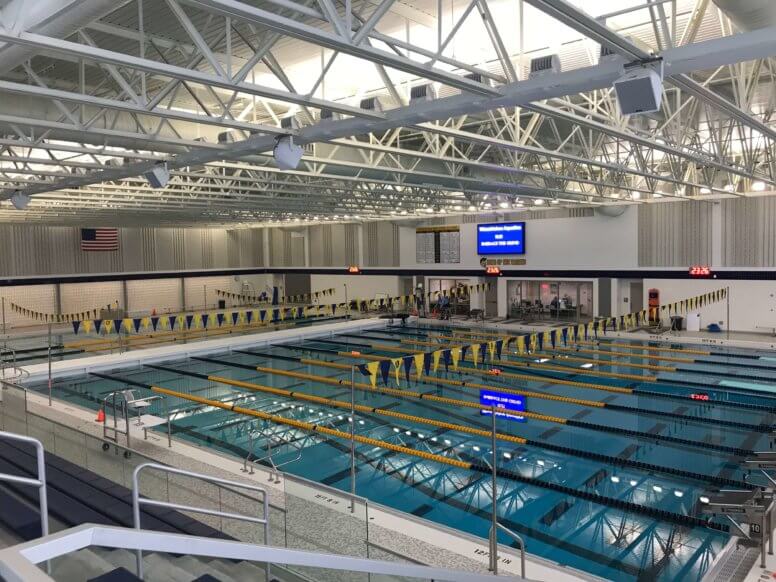
The rising tide of support for on-campus natatoriums
According to 2017 statistics from the U.S. Census Bureau, swimming is the fourth most popular sport or activity in the U.S. Add to that the increasing expectations of parents and students for an educational experience that provides a wide range of athletic opportunities, and more and more schools are renovating existing swimming facilities or constructing new natatoriums on campus.
Benefits Of An On-Campus Natatorium
An on-campus natatorium enhances the athletic program of any school, opening the door for a wide array of team and individual water sports. Educational institutions boasting a natatorium have a powerful recruitment tool as prospective students weigh their options for a learning experience that supports their athletic aspirations as well as recreational enjoyment. As a locale for swim meets and competitions, schools gain exposure to diverse populations, further boosting their visibility and appeal.
The safety and ease of a state-of-the-art natatorium supports the sport and fitness goals of students year-round, but its benefits extend far beyond campus. With the ability to open swim lessons and fitness classes to the wider community, schools become a hub for connection and well-being that enriches all involved.
Features of a Natatorium
A natatorium is far more than a pool; it’s a multifunctional complex, often with more than one pool area, and a variety of features and constructs that can include:
- Competition & Instruction Pools: Competition pools are generally 50 meters (an Olympic-sized pool), 25 yards (NCAA regulated length for many high school, college, and recreational pools), or 25 meters (often used for international competitions). The size of instruction pools can vary based on their intended use for instructing children or adults in swimming or diving.
- Diving Boards & Platforms: Specific regulations govern the length, height, and placement of diving boards and starting platforms for safety. Competition pools generally have two diving boards, one positioned 1 meter above the water level and one positioned 3 meters above the water level.
- Competition & Lap Lanes: The NCAA recommends a minimum of eight 6-foot lanes for competition; lanes for championship competitions should be either 75 feet, 25 meters or 50 meters long. Lap lanes tend to be wider than competition lanes.
- Moveable Bulkheads: With moveable bulkheads, a larger pool can be divided into two smaller pools for simultaneous swimming events or classes.
- Seating: A comfortable and well-designed seating area for spectators will encourage visitors and facilitate maximum usage of the natatorium as a highlight of the campus’ offerings.
- Locker Rooms: Students, community members, and visiting teams will need a place to change for competitions or recreational swimming.
- Prep/Warm Up Areas: Additional pools and/or floor space will allow swimmers to warm up and prep before sport or leisure activities.
A Specialized Construction Job
Natatoriums are among the more complex constructions a school or facility can undertake, and it’s vital to partner with a firm well versed in the intricacies of natatorium construction.
In choosing a construction company, be sure you’re working with a firm that:
- Has a proven track record of successful construction for on-campus natatoriums.
- Is capable of coordinating with your architect as well as all of the other professionals involved, from electricians to plumbers.
- Is knowledgeable of the specific requirements to constructing a swimming facility, including choosing the proper HVAC system to support air quality, incorporating alternative materials that would work well in the humid pool environment, knowing what type of insulation and building envelope works best with the humidity level and temperature of the space, and more.
Skepton Construction has extensive experience in the construction and renovation of natatoriums on campus, and has helped numerous schools realize their dreams of a state-of-the-art swimming facility to benefit their students and community. Bringing a natatorium to your educational facility is a significant undertaking, but by enlisting the right experts it can pay off in a multifunctional space that will draw people to visit and enjoy the campus for years to come.
